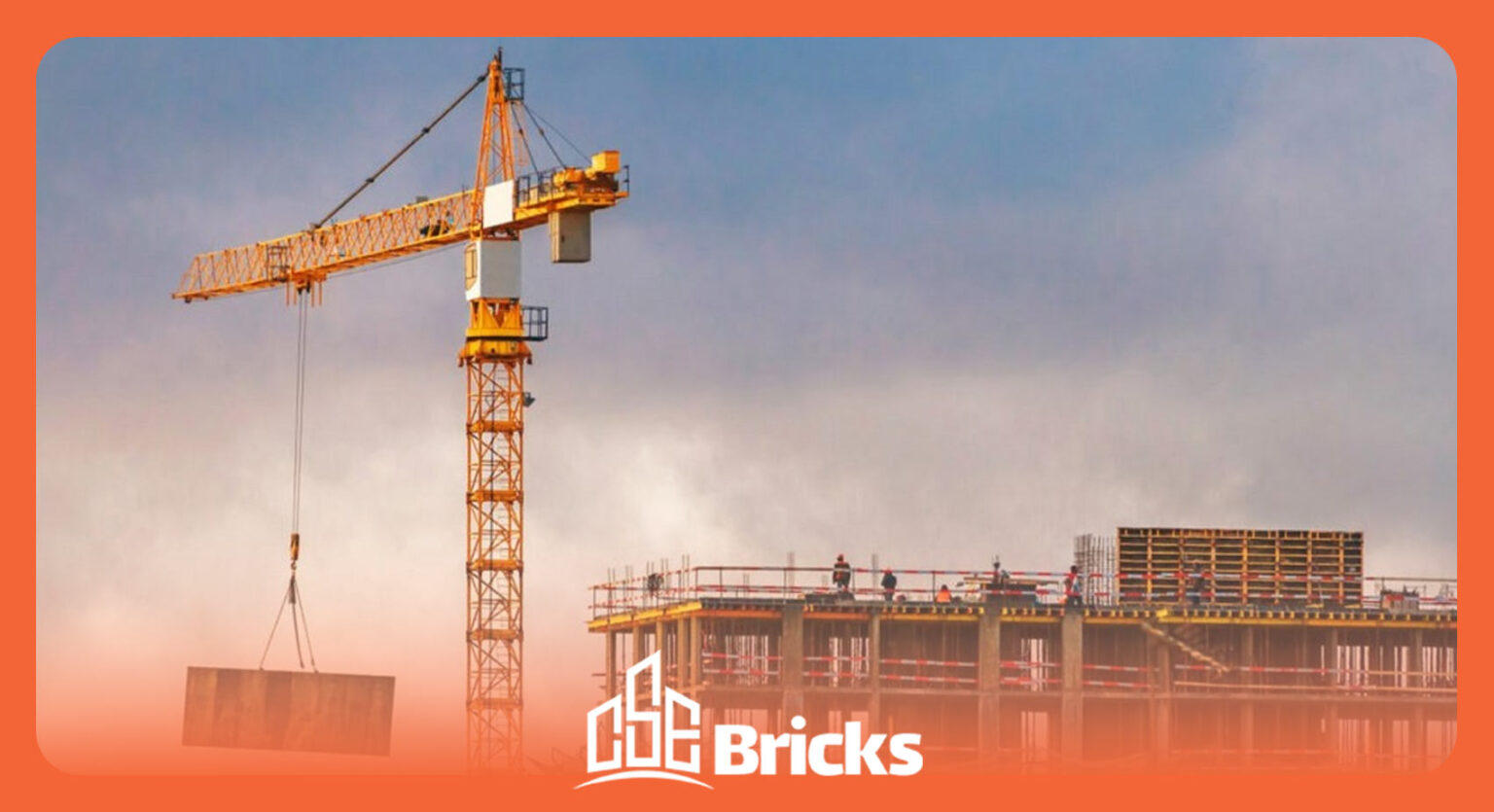Blog
What are the methods of strengthening building?

What are the methods of strengthening building?
For centuries, brick houses and buildings have been our best protection against various factors. In fact, bricks are the best way to keep your family, home, and belongings safe during natural disasters. As you know, many brick structures that were built years ago are still standing strong and resilient. Stay with the website CSEBRICK.COM to learn how bricks provide excellent protection against factors such as fire, water, earthquakes, and more, and what to consider for building strengthening. methods of strengthening building vary based on the materials used in construction. Brick wall construction is highly popular and widely used in various structures.
Strengthening Buildings Against Fire
When it comes to fires, time is of the essence. Firefighters say that before a fire reaches the interior of the house, bricks can withstand heat for an average of 1.5 hours, providing protection. In comparison, siding and fiber cement can only resist for 30 minutes. Even brick veneer or thin bricks provide an additional hour of protection for the interior and exterior facades, which means less damage to property and more saved lives.
Clay is used as the raw material for brick production. After molding the clay, the bricks are fired at a temperature of approximately 2008 degrees Fahrenheit, making bricks a non-combustible material. Various factors are considered when choosing a material to strengthen a building against fire, such as load-bearing capacity, thermal conductivity, and its susceptibility to decay.
The maximum heat resistance of bricks against fire is 1200 degrees Celsius. In fact, firing bricks in a kiln at high temperatures increases their fire resistance. Brick walls are often built using mortar, but extreme temperature increases can cause the mortar to crack and expand. However, brick walls are often held together with mortar, which is less effective as a fire-resistant material.
Which bricks have higher resistance to heat and fire?
-
Fireproof Bricks:
To strengthen a building against fire, you can use fireproof bricks. These types of bricks are produced at high temperatures to achieve greater heat resistance. Fireproof bricks come in various types based on their production method and application. Nowadays, fireproof interlocking bricks are produced by the interlocking brick machine without the need for a kiln, and they have high resistance to heat.
-
Interlocking Bricks:
Our recommendation for strengthening buildings against fire is the use of interlocking bricks. Interlocking bricks, also known as Lego bricks or lock bricks, are produced by a compression process from a mixture of stone powder, sand, cement, and water. These bricks are highly resistant to heat and have successfully passed heat resistance tests, which we have explained in detail in the article on types of interlocking bricks.
-
Strengthening Buildings Against Water
You might think all the work is done once you’ve installed a brick surface in your home, workplace, hallway, sidewalk, patio, or balcony, and there are no more worries. In fact, although brick is durable and solid, it is still vulnerable to moisture. Everything deteriorates over time, and exposure to various elements may accelerate this process. While bricks may still appear as strong and robust as ever, they are still highly susceptible to moisture.
The presence of any water, even in the smallest cracks and crevices, can lead to various problems over time. While your brick surface may look good now, if you want it to last a long time and be water-resistant, you need to take additional steps to ensure its quality over time.
Why is it important to protect brick walls and make them resistant to water penetration?
Brick and mortar are not 100% waterproof. Even modern homes built with cavity walls and largely impermeable materials can still be affected by moisture and water penetration. Excessive moisture in bricks and masonry can lead to internal damage and black mold.
Depending on the condition of your walls, there are two ranges of products available for waterproofing your brick and stone walls.
Waterproof Creams and Sealants for Untreated Brickwork
Waterproof cream is one of the ways to strengthen buildings against water. When the structural integrity of your walls deteriorates and your building walls develop cracks, or if you want to carry out strengthening operations for an old building, you can use waterproof facade cream to create an invisible barrier between the elements and the exterior of your home. These waterproof creams protect your house from rainfall, potential frost damage, and pollutants. Anything from granite to bricks (a combination of clay, sand, and straw) can be used to build a house, and these materials can be protected in this way.
If you’re unsure whether a water repellent is suitable for your type of stone or masonry, please consult with a technical advisor. Some substrates may not fully absorb the active ingredients if they are inherently impermeable. It is always recommended to apply a small amount in an area to test material compatibility.
If the exterior part of your wall is brick or unpainted brick, you can use a layer of facade cream to protect the wall from water penetration for up to 30 years.
How do waterproof facade creams work?
When applying waterproof creams on surfaces like brick, stone, etc., the water-repellent creams soak into the material. The cream’s consistency allows the active ingredients to penetrate deep into the wall without the risk of runoff. These active ingredients coat the capillaries of the brick, reducing water absorption and, in turn, protecting the substrate and creating a long-lasting invisible barrier against water penetration. The advantage of using facade creams is that they still allow your walls to “breathe.” Without breathability, the moisture in your walls cannot evaporate, preventing your wall from drying out. The water-repellent creams dry clear, allowing each exposed brick to retain its original appearance.
How to Use Waterproof Brick Cream?
Using this cream is very simple. With a brush or roller, apply a layer of waterproof cream to the brick wall. You can also spray your waterproof cream.
Nano Coatings
Nano waterproof coating is one of the methods for strengthening buildings against water. The nano coating for brick facades of buildings serves as a moisture barrier. The applied layer of nano brick waterproofing acts as a protective barrier against water and is resistant to damage from dust penetration, chemical substances, and more, which increases the durability and lifespan of brick buildings.
Of course, nano coatings also enhance the appearance and cleanliness of bricks, giving them a more attractive facade.
Strengthening a bricik Buildings Against Earthquakes
An unreinforced masonry building is a structure made of brick or block and mortar with no reinforcing steel. During an earthquake, the mortar cracks and the bricks separate. The walls peel outward and fall toward the sidewalk. Modern building codes require structures to be flexible during earthquakes so they can move and sway without breaking. Brick buildings, on the other hand, are brittle during earthquakes. Steel is a flexible material, so in the strengthening of brick buildings, steel is often used to reinforce the masonry and improve the building’s ductility against earthquakes.
In fact, unreinforced masonry buildings have a long history of unsafe performance. See the photos below of the ruins of a brick building after a 6.4 magnitude earthquake lasting 10 seconds in 1933 in Long Beach. The 1933 earthquake led to changes in California’s building codes to prohibit new construction of unreinforced masonry buildings. Unreinforced masonry buildings suffer more damage the longer an earthquake lasts. Whether the shaking lasts 10 seconds or 60 seconds, you don’t want to be inside a brick building during an earthquake. To protect your life, you will need to strengthen the building against earthquakes.
Advantages of Foam Spray
Other methods of strengthening buildings against earthquakes require much more invasive and expensive measures, such as adding steel stud walls in front of existing walls or completely breaking down walls. However, the polyurethane foam injection method only requires a small hole for foam injection, leaving the rest of your building walls intact. Polyurethane foam has very effective insulating and strengthening properties, is resistant to heat loss, and can help you save on energy costs in the long run.
Interlocking Bricks
Another method of strengthening buildings against earthquakes is to construct homes with interlocking bricks, which we recommend. When building with interlocking bricks and wall construction, rebar is embedded vertically and horizontally in the walls. This ensures that the structure remains strong during earthquakes and does not collapse during vibrations.
Strengthening Buildings Against Acid
To strengthen buildings against acid, acid-resistant refractory bricks are used. Acid-resistant bricks are used for masonry and flooring exposed to acid splashes, lining rooms and towers in chemical plants, lining sewers carrying industrial effluents, and preventing surface degradation by acids, except for hydrofluoric acid and per chloric acids. Clay refractory bricks resistant to acid can withstand temperatures up to 400 °C (752°F). Acid-resistant bricks are also strong against chemicals, including most mineral acids and abrasion. They are suitable for applications such as power generation and industries like cement, steel, and aluminum.
Which method of building reinforcement is more commonly used in your area?













